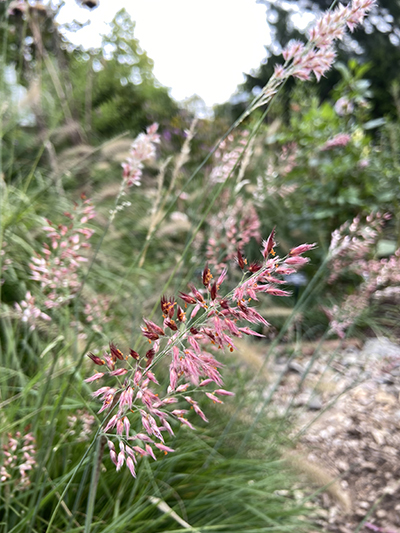
Plants of the Week: September 23

Melinus nerviglumis ‘Pink Crystals’ (ruby grass)
I’m a sucker for any plant with silvery-green foliage and pink flowers, and Melinus nerviglumis ‘Pink Crystals’, blooming in the Cut Flower Display Garden (CFG), is certainly making its mark. I started this grass from seed a year ago and planted it outside in the CFG during the summer of 2023, where it grew on its mound of thin silvery foliage, but with no flowers in that first year. Because ruby grass grows perennially in Zones 8-10, our zone 7b would certainly render this grass an annual, so I decided to overwinter the specimens in our greenhouse. To my utmost delight, when I put the Melinus outside this year, they were mature enough to produce inflorescences.
Hovering elegantly overtop its silvery foliage, the blooming panicles are covered in soft, glistening, silky hairs that give the panicles a shimmering appearance. Minute orange flower structures are nestled within the silky hairs and once pollinated start to develop seed and fade into a whitish color. Each clump will reach a height of 1.5 to 2 feet with a spread of 1 to 1.5 feet. Melinus nerviglumis is native to Africa, south of the Sahara and is one of ten Melinus species in southern Africa. The cultivar ‘Pink Crystals’ has especially rose-hued plumes.
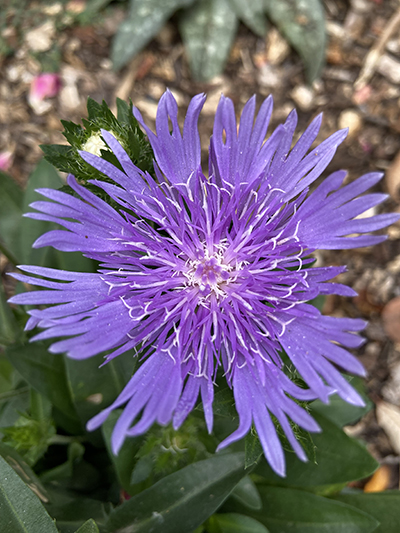
Stokesia laevis ‘Peachie’s Pick’ (Stokes’ aster)
I often find myself walking through the gardens, leisurely in the late parts of the afternoon, when the sun has almost set. During this magical hour of dusk, colors appear brighter and more intense, giving the eye a new perspective on plants I may have passed many times and not given any notice. Of such plants, I must highlight the Stokesia laevis ‘Peachie’s Pick’, whose 3 inch, cornflower-like, violet blue flowers are like shining beacons in the dying evening light.
Native to wetlands, wet pinewoods, savannas, and ditches along the coastal plain, from North Carolina to Florida and Louisiana, this Zone 5-9 plant often occurs in wetter conditions, however it can adapt to a wide range of soil and moisture conditions. Blooming best in full sun, the straight species blooms early to mid-summer with a possible second flush of blooming if spent flowers and seed-heads are removed. The cultivar ‘Peachie’s Pick’ is in reference to the individual, Peachie Saxton of Mississippi, who discovered the plant and has a slightly larger bloom and blooms a little later in the season with an extended range.
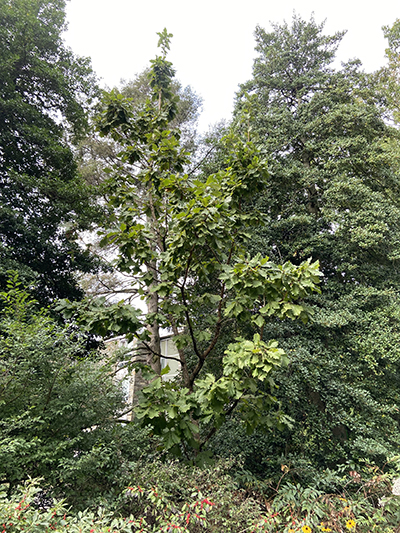
Quercus dentata and its cultivars (Daimayo oak)
There are many species of oaks from around the world in the Scott Arboretum collection, all with unique features of their own. Variations between species can be apparent in the growing habit of the tree, shape and size of their acorns, forms of their catkins, and leaf shape and size. When comparing the leaves between all of them, there are none larger than the Quercus dentata or Daimyo oak and none more interesting as its cultivar ‘Pinnatifida’.
Quercus dentata is native to Japan, Korea, and China and is noted for the remarkable size of its foliage, up to a foot long and 7 inches wide. A slower grower, the Daimyo oak has an irregular growing habit with a semi-open crown. It grows in Zones 5-9 and has the bad habit of holding onto its spent leaves in the winter. We have two specimens of the straight species, one along college ave planted in 2004 and another near the top of the amphitheater, planted in 1992. It has two cultivars, ‘Carl Ferris Miller’ and ‘Pinnatifida’.
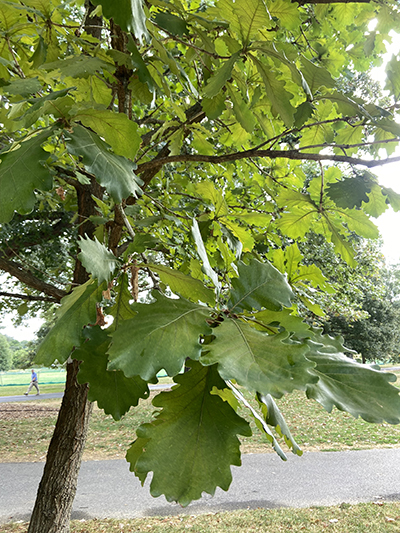
Q. dentata ‘Carl Ferris Miller’ was propagated by the de Belders of Belgium who are particularly noted for their Hamamelis (witchhazel) cultivars. They received seed from Carl Ferris Miller, an American, who collected seed in Korea in 1976. This cultivar was selected for having improved hardiness and vigor. The Scott Arboretum collection has one specimen, located on the west side of Magill Walk near the Dining and Community Commons, also planted in 2004.
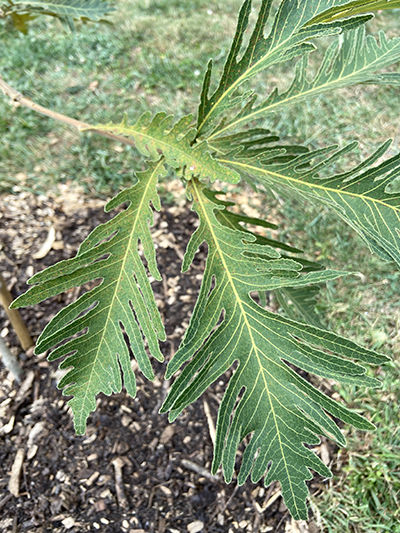
The second cultivar is a recent addition to our collection and might just be the most interesting oak I have ever seen. Q. dentata ‘Pinnatifida’ is an incredibly cut-leaf selection and features deeply lobed leaves, cut nearly to the mid-vein. The leaves are just as large as the species, although more delicate and hairy looking. Of an already slow growing tree, the growth rate of the cultivar is even more glacial, so much so that the maximum size has yet to be determined. It was recently planted on the hillside below the Terry Shane Teaching Garden and certainly deserves a visit if you are exploring the Arboretum.





Wendy
Posted at 07:02h, 21 OctoberNice plants, especially the very pinnate oak, The full tree texture must be amazing.